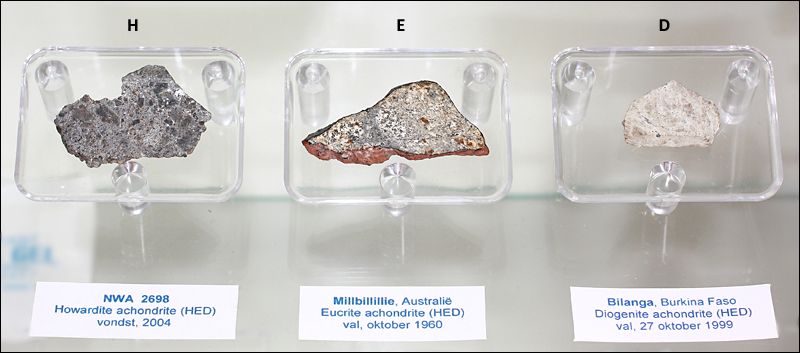HED group

An example of (from left to right) a howardite, eucrite and diogenite meteorite: the H-E-D in the HED meteorites group. They are believed to be samples from asteroid 4 Vesta, representing the surface breccia (H), surface basalt flow (E) and deeper plutonics from deep in a magma chamber (D).
The HED group is a family of three closely related types of achondrites (stony meteorites lacking chondrules) known as howardites, eucrites, and diogenites. These are all brecciated igneous rocks (breccia = rock that has been broken up and recemented). They range from coarse-grained orthopyroxenites (diogenites) to cumulates and fine-grained basalts (eucrites). The howardites are regolith breccias, rich in both solar wind gases and clasts of carbonaceous material.
The HEDs have similar oxygen isotopic compositions, indicating they may all have come from the same parent body. Their great crystallization ages of 4.43 to 4.55 billion yr suggest that the parent body was large and differentiated and had became geologically inactive after a brief but intense igneous history. The finger of suspicion points at the the third-largest asteroid, 4 Vesta, which has a reflectance spectrum very similar to those of the HED group members. Vesta also bears the scar of a huge impact event – a 30 kilometer-deep, 460 kilometer-wide depression near its south pole that is deep enough to expose the mantle. The theory is that, during the impact event, large chunks of matter were ejected from Vesta to form smaller asteroids of similar composition – the so-called Vestoids. Some of these bits of Vesta subsequently entered near-Earth orbits, and are thought to be the sources of the howardites, eucrites, and diogenites.


